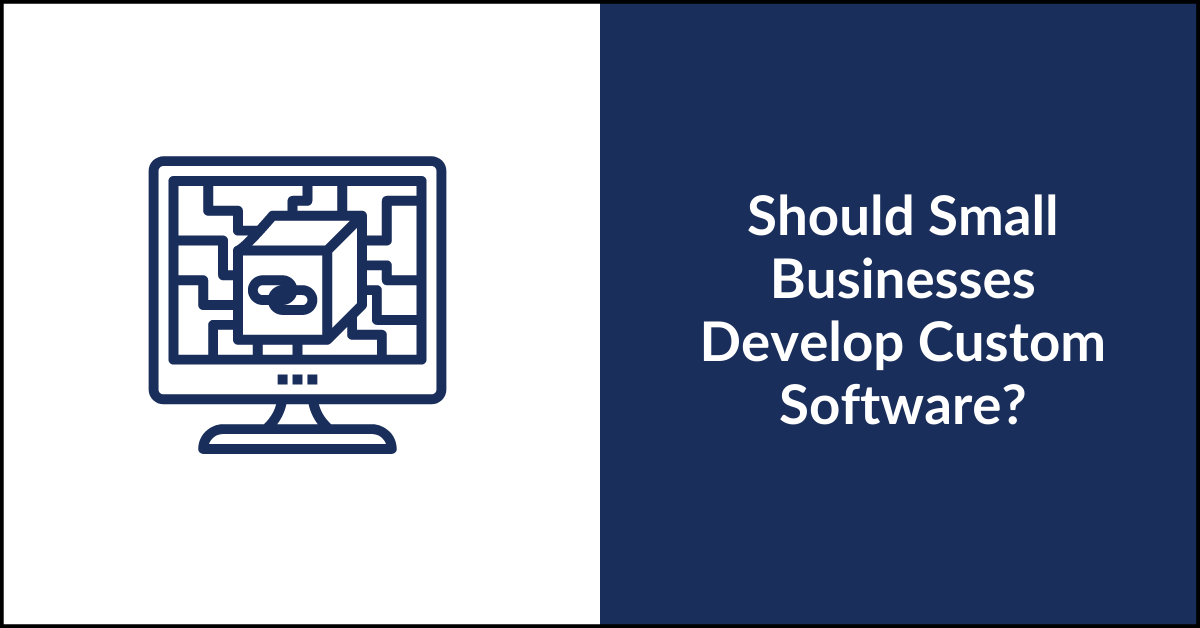
Every business, large or small, runs on software. But should it be custom software or something off-the-shelf like a software as a service (SaaS) platform?
At Far Reach, we build custom software, so you might expect us to tell you that custom is always the way to go, for every business. However, that’s not our take on it.
We know that there is no one-size-fits-all when it comes to software strategy and the role software plays in each individual business. The right solution for you may be custom software, off-the-shelf
software, or something in between.
How do you know what to choose? Let’s find out by looking at the questions that can guide you toward the right choice for you.
Signs You Need Custom Software
If you think you might need custom software, download this free guide to help you decide.
1. Does the Software You Need Already Exist?
If you identified a problem that can be solved or a process that can be improved with software, the first thing to do is look for ready-to-use solutions. There is no shortage of SaaS CRMs, ERPs, email marketing automation solutions, accounting platforms,
and more.
Most likely, you will find a solution that meets at least some of your criteria. Still, that’s not necessarily enough to push the buy button.
Go further with your research—maybe even test some SaaS platforms to see if they can be customized the way you need them to be. Can you really solve the initial problem without adding more overhead? Does that platform integrate with the software
you already use? Is it scalable enough for your growth plans?
If the answer to all the questions above is a resounding yes, you’ve got your first buy signal. You can read more about buying versus building software here.
2. When Do You Need to Start Using the Software?
Do you need to implement the software system tomorrow or next week? Is this software something that’s absolutely crucial to the functioning of your business? If so, buying can be the faster way to go—at least in the short term.
Building custom software takes time. It will be at least a couple of months before you’ve got a minimum viable product you can start using. Be realistic when you think about timing. The project may feel top of mind and therefore urgent, but
once the immediate hype runs its course, will it still be high priority?
If it’s both urgent and important, a great option is to start with a software system that’s already out there. Even if it doesn’t meet all your criteria, it will at least get you up and running. You can start working on your
custom software while you use an off-the-shelf solution and use your experience with the SaaS platform to inform your development decisions.
3. What Is Your Initial Budget and Expected ROI?
This is where things get a bit murky. Custom software requires a larger initial investment. Over time, however, you can expect that the ROI of custom software
will grow compared to that of off-the-shelf solutions.
Why? Because if you do it right, custom software is a differentiator for your business. You make a larger up-front investment; continue with smaller investments for the long-term; and see a continual increase in efficiency, sales, customer satisfaction,
or whatever your goals may be.
So, in the long run, custom software often wins both ROI and budget races. However, the initial investment hurdle remains. If a sizable investment in custom software development isn’t
an option yet, add it to your list of priorities for when your business grows and, consequently, you outgrow your off-the-shelf solution.
4. Are You Willing to Support it in the Long Run?
Custom software should be integrated into your business. When your company grows or changes, those shifts need to be reflected in your software.
In an agile development framework, there’s no end to the software development cycle. You can always add new features, improve security, remove obsolete functions, modernize systems,
and more.
Before you take the leap, make sure you are ready to invest in software for the long run. This brings us to our next point.
5. Do You Have a Software Development Partner You Can Trust?
Building software (even a basic app) with a freelancer or unknown entity can be more affordable than hiring a software partner. But it’s also far riskier.
Since your commitment is for the long run (right?), you need to make sure your software partner will be there to guide you and improve your application when needed. An established company with a proven track record is a better investment for the
long run, especially if your internal development team is small or nonexistent.
Read more about how STRATAFOLIO works with us and why they chose us for the long term.
6. Is Security a Major Concern for You?
With the number of cyberattacks growing every year, security is a concern for all of us. However, some industries are far more sensitive
to data breaches than others: financial institutions, healthcare providers, and insurance to name a few.
Because sensitive data is involved, organizations in these sectors are more likely to be targeted by cyberattackers, and a successful attack will be extremely damaging and costly. These industries also often have IT standards and regulations that
have to be followed whether you opt for SaaS, custom, or something in between. If you are in an industry where security is a top priority, make sure security is part of your evaluation process.
Not sure how to approach your software idea?
We understand. It’s an important decision that shouldn’t be taken lightly. We’re here to help—
reach out if you want to talk about custom software versus off-the-shelf solutions.